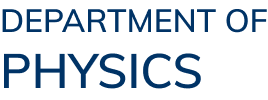Abstract
In recent years, quantum sensing has emerged as a cornerstone of quantum technol-ogy. It provides profound insights into the local environment of a qubit, which not only facilitates the development of robust quantum coherence protection strategies but also guides materials engineering, promising to fundamentally reshape our measurement capabilities. Among the various platforms, solid-state defect centers offer distinct advantages, including their operational robustness under ambient conditions, func-tionality at extreme pressures, and inherent biocompatibility. The Nitrogen-Vacancy (NV) center in diamond, in particular, stands out as one of the most promising can-didates owing to its exceptional optical and spin properties and its long coherence times at room temperature.
This dissertation explores the application of the NV center as an advanced quan-tum sensor to probe novel physical phenomena. We demonstrate the coupling between an NV center and a magnetic thin film, enabling the detection of high-order nonlinear harmonic signals up to the 25th order from the sample surface—a feat not achieved with conventional sensors. Furthermore, by employing a dual-microwave source for multi-wave mixing excitation, we realize a frequency conversion bandwidth spanning from 0.1 to 12 GHz and showcase the utility of this technique in frequency detection and coherent qubit control. Through numerical simulations and qualitative analy-sis, we ascertain that this high-order harmonic generation stems from a nonlinear magnetic response within the spintronic device, rather than conventional frequency conversion mechanisms based on nonlinear electronic responses. This nonlinearity originates from symmetry-breaking features in the magnetic thin film, such as do-main walls. Our findings suggest that this methodology can be extended to other hybrid systems of magnetic materials and spin qubits, thereby broadening the scope of understanding and application for magnetic materials.
Despite the successful implementation of the NV center for AC magnetometry, the detection of faint AC magnetic fields, such as those from external nuclear spins, has been fundamentally constrained by the limited sensitivity of shallow NV centers. This challenge, rooted in the noise-induced decoherence from surface defects that shortens the coherence time, represents a significant impediment not only for NV-based sensing but for the entire field of solid-state spin quantum sensing. We address this long-standing problem through a novel interface engineering strategy, combining oxygen termination of the diamond surface with subsequent graphene patching. This approach extends the transverse coherence time (T2) of shallow NV centers to over one millisecond, approaching the fundamental spin-lattice relaxation (T1) limit. Ra-man spectroscopy and density functional theory (DFT) reveal that this enhancement is driven by charge transfer from the graphene, which effectively passivates surface electron spins by pairing them. This conclusion is corroborated by Double Electron-Electron Resonance (DEER) spectroscopy, which shows a marked reduction in the density of unpaired surface spins. With this enhanced sensitivity, we demonstrate two significant applications in nuclear spin detection: first, the detection of a single, weakly coupled 13C nuclear spin within the diamond lattice, and second, the detection of 11B nuclear spins from an external hexagonal boron nitride (h-BN) layer. These results showcase the potential for achieving nanoscale nuclear magnetic resonance (NMR). Moreover, we validate that an h-BN protection layer, integrated with our interface engineering, ensures remarkable stability under harsh processing conditions and compatibility with target materials. This integrated approach, which synergis-tically combines extended coherence, heightened sensitivity, and device durability, propels the development of practical quantum sensing.
In summary, this dissertation presents two pivotal contributions. First, we have introduced a novel method for probing the nonlinear response of magnetic materials using NV centers, expanding their application domain in quantum sensing. Second, we have demonstrated a robust strategy for dramatically improving the coherence time of shallow NV centers, offering a potential solution to the persistent challenge of surface-induced decoherence and thereby elevating the upper limit of quantum sens-ing sensitivity. These advancements collectively pave the way for practical quantum technologies. We envision that the enhanced NV center will become an indispensable tool for experimental scientists, enabling the investigation of previously inaccessible phenomena and resolving long-standing scientific questions.
